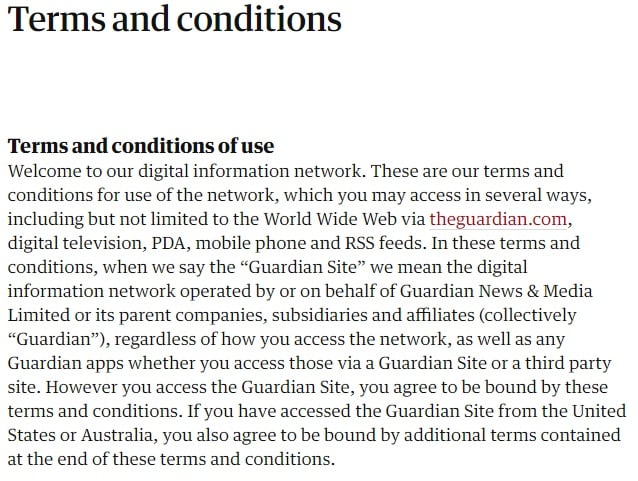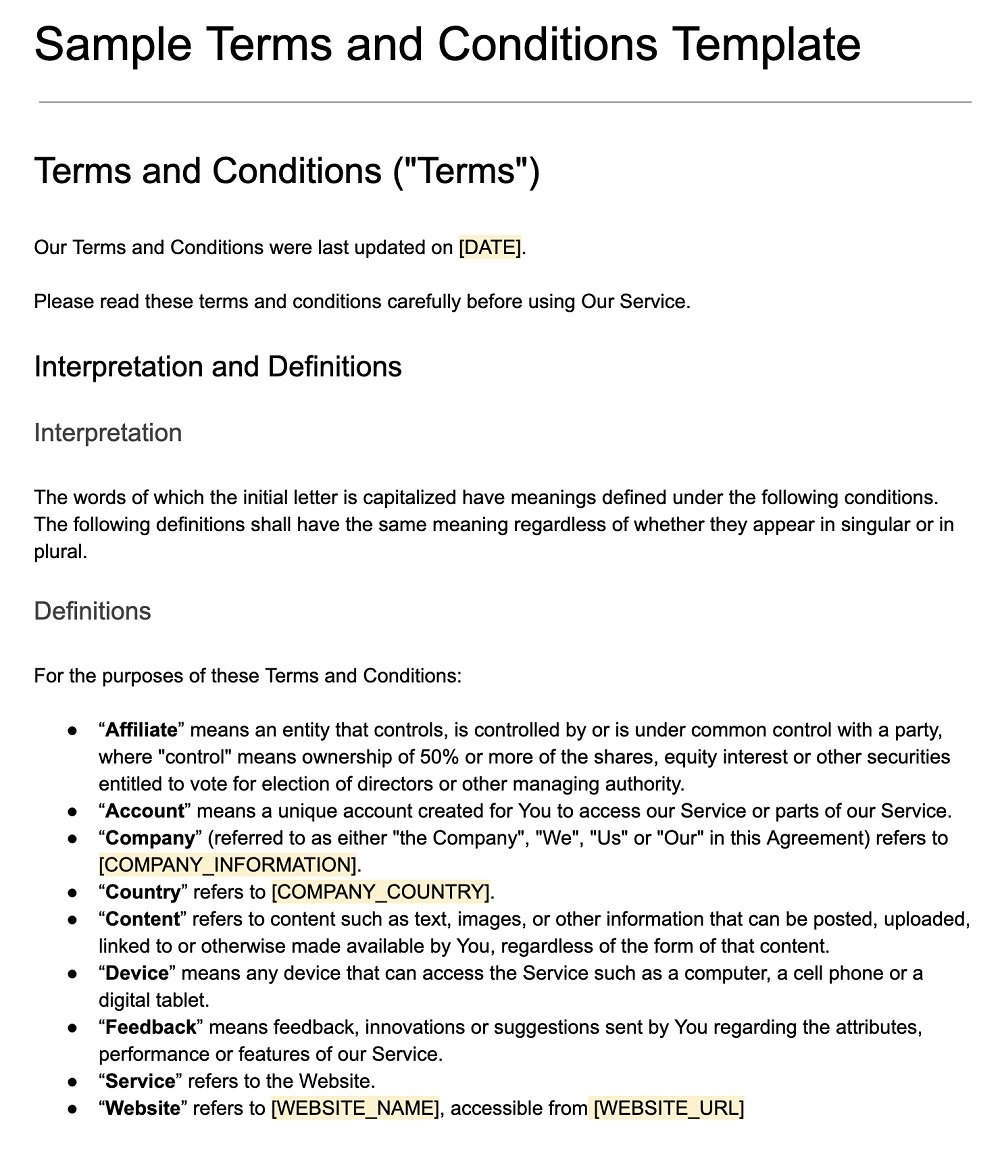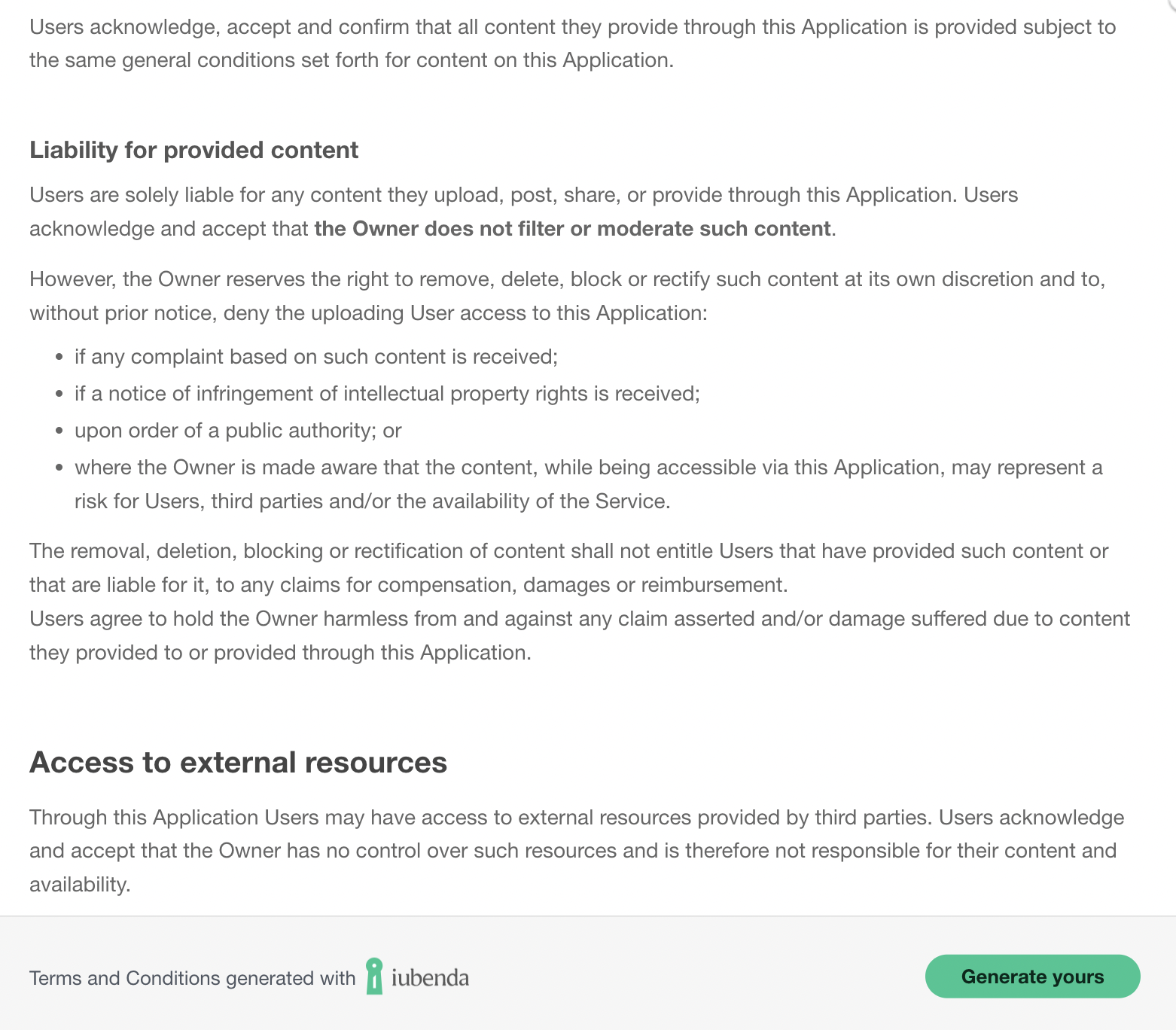Terms and Conditions are the legal agreements between a service provider and the user outlining the rules for using the service. They define the rights and responsibilities of both parties.
Navigating the digital world demands an understanding of the agreements that bind us, and Terms and Conditions serve as the cornerstone of a transparent relationship between businesses and consumers. These documents are crucial for protecting both the service provider and the user, establishing use limitations, privacy policies, and what happens in case of a dispute.
They are essentially a contract that users must agree to, often before using a website, app, or software. While they can be lengthy and complex, it’s important for users to review them to avoid any potential legal issues. For companies, crafting clear and enforceable Terms and Conditions is vital in safeguarding their interests and maintaining a fair and orderly platform for their users.
The Importance Of Terms And Conditions
The Importance of Terms and Conditions on a website or app cannot be overstated. These legal agreements serve as a binding contract between the service provider and the user. They outline the rules, requirements, and standards expected from both parties. Understanding the importance ensures a safer and more transparent environment for users and providers alike.
Why They Matter
Terms and Conditions, often known as Terms of Service or Terms of Use, are critical because they:
- Define user behavior, setting clear expectations.
- Protect intellectual property, safeguarding your content.
- Limit liability to minimize legal risks.
- Clarify agreement to avoid misunderstandings.
- Grant user rights for a fair user experience.
Common Clauses Explained
Within Terms and Conditions, certain clauses are standard. Here’s a breakdown:
| Clause | Explanation |
|---|---|
| Use License | Explains how users can use your content or services. |
| Privacy Policy | Describes data handling and user privacy. |
| Limitation of Liability | Limits legal claims against the company. |
| Governing Law | States the legal jurisdiction for disputes. |
| Termination | Outlines account deactivation or service end terms. |

Credit: www.termsfeed.com
Navigating The Fine Print
Navigating the Fine Print often seems daunting. Pages of legal jargon can be overwhelming. Yet, understanding these terms is crucial. They impact your rights and obligations. This section will guide you through this dense thicket of legalese.
Tips For Reading Efficiently
Approaching the fine print can be a strategic exercise. Keep these tips in mind:
- Skim the document first. Look for headings and subheadings.
- Identify key sections relevant to your use of the service or product.
- Highlight important terms. Focus on rights, obligations, and limitations.
- Use online tools to help understand complex terms.
- Take breaks if the document is lengthy. This prevents information overload.
Red Flags To Watch Out For
Some clauses could signal potential issues:
| Red Flag | Why It Matters |
|---|---|
| Arbitration clauses | Limits your right to sue the company. |
| Auto-renewal terms | Could lock you into payments. |
| Limited liability | Restricts compensation for issues. |
| Data sharing policies | Your personal information could be at risk. |
Always question clauses that seem unfair. Seek legal advice if needed.
Privacy Policies Unveiled
Privacy policies tell you how a website handles your information. They are important. This section helps you understand these policies better.
What Information Is Collected
Websites collect different types of information. Here are some examples:
- Personal details: Like your name and email.
- Usage data: How you use the website.
- Location: Where you are in the world.
How Your Data Is Used
Companies use your data for various reasons. Here are the main ones:
| Reason | Description |
|---|---|
| Improvement | To make services better for you. |
| Personalization | To tailor your experience. |
| Security | To protect your information. |
Your data helps websites serve you better. It is kept safe.

Credit: www.termsfeed.com
User Rights And Responsibilities
Understanding User Rights and Responsibilities is key to using websites safely. This section explains your protections and duties online. Knowing these helps you use websites better and keeps you safe.
Your Legal Protections
Users have rights that keep them safe online. These rights make sure users can use websites without worry. It’s important to know your rights to protect yourself.
- Privacy: Websites must protect your personal information.
- Security: Sites should keep your data safe from hackers.
- Information: You have the right to know how your data is used.
Obligations To Fulfill
With rights come responsibilities. Users must follow rules to keep websites safe for everyone. Knowing your duties helps everyone enjoy the internet.
- Respect: Treat others online as you want to be treated.
- Honesty: Provide true information when needed on websites.
- Rules: Follow the website’s rules to help keep it safe.
The Impact Of Ignoring Terms
Clicking ‘Agree’ without reading may feel harmless. Yet, terms and conditions matter. Skipping them has real effects. Let’s explore the risks of ignoring these important documents.
Real-life Consequences
Losing access to services can happen. Unexpected charges may apply. Personal data could be misused. These are just a few outcomes. Below, a list details more consequences:
- Account suspension: Breaking rules you didn’t read.
- Privacy loss: Sharing data unknowingly.
- Service limitation: Missing out on features.
Legal Repercussions
Terms and conditions are legal contracts. Ignoring them invites trouble. You could face lawsuits or fines. Here’s a breakdown of legal risks:
| Issue | Risk |
|---|---|
| Copyright infringement | Legal action and penalties |
| Contract breach | Compensation claims |
| Data violation | Regulatory fines |
These are not empty threats. Courts enforce these agreements. Stay informed to stay safe.
How To Dispute Unfair Terms
Have you ever felt trapped by unfair terms in a contract? You’re not alone. Many people find themselves bound by conditions they didn’t fully understand. But there’s good news! You can dispute these unfair terms. Here’s how to start that fight for fairness:
Steps To Take
- Read the Terms – Carefully review every clause. Look for anything that seems unfair or unclear.
- Gather Evidence – Collect any relevant documents, emails, or records that support your position.
- Contact the Company – Reach out to the business. Explain why you believe the terms are unfair.
- Seek Legal Advice – A lawyer can help you understand your rights and the next steps.
- File a Complaint – If discussions fail, file a complaint with a consumer protection agency.
Resources For Help
- Consumer Protection Websites – Find online guides and tips on consumer rights.
- Legal Aid Services – Look for free or low-cost legal assistance in your area.
- Community Forums – Join discussions with others who have faced similar issues.
- Government Agencies – Contact your local consumer protection agency for help.
Updates And Changes In Terms
Companies often update their Terms and Conditions. These documents are vital. They outline your rights and obligations. It’s crucial to understand any changes. This ensures your continued compliance with the service’s rules. Let’s explore how to stay informed and react to these updates.
Staying Informed
Being aware of updates is important. Here are ways to stay informed:
- Check Emails Regularly: Companies send notifications about updates.
- Visit the Website Often: Terms are typically posted online.
- Set Reminders: Mark your calendar to review terms periodically.
What To Do When Terms Change
Here’s a simple action plan for when updates occur:
- Read the New Terms: Understand the changes fully.
- Seek Clarification: Contact support if you have questions.
- Decide Your Next Steps: Continue using the service or opt-out.

Credit: www.iubenda.com
Creating A Safer Browsing Experience
Creating a Safer Browsing Experience is essential in today’s digital world. We often click and browse without thinking twice. Yet, dangers lurk behind seemingly harmless links and pages. To ensure your online journey remains secure, adopting certain strategies is a must. Let’s explore how tools, extensions, and education can fortify your browsing safety.
Using Tools And Extensions
Several tools and extensions can guard your online activity. These add-ons work within your browser to protect you from threats. They can block harmful ads, warn you about risky websites, and manage your passwords securely. To start, consider these steps:
- Install an ad blocker to stop malicious ads.
- Use a password manager for strong, unique passwords.
- Add a security extension that scans websites for dangers.
Educating Yourself And Others
Knowledge is power in the realm of cyber safety. Learn about common online threats. Share this knowledge with friends and family. Use these tactics to stay informed:
- Read articles on cybersecurity basics.
- Watch videos about safe browsing practices.
- Follow tech blogs for updates on new threats.
Remember, staying safe online is a continuous process. Tools help, but staying educated is key. Teach others to create a safer browsing community.
Frequently Asked Questions
What Are Terms And Conditions?
Terms and conditions are legal agreements between a service provider and a person who wants to use that service. They outline the rules for using the service and what can happen if those rules are broken.
Why Are Terms And Conditions Important?
They protect both the service provider and the user by making the rules clear. This helps prevent misunderstandings and can resolve disputes about the service use.
How Often Should Terms And Conditions Be Updated?
Terms should be reviewed regularly and updated as needed to reflect changes in law, business practices, or services offered. This ensures ongoing legal compliance and protection.
Can Terms And Conditions Be Changed Without Notice?
Typically, service providers must inform users of any changes. However, the methods of notification can vary and are often detailed within the original terms.
Conclusion
Wrapping up, understanding terms and conditions is crucial for safeguarding your rights online. By staying informed, you ensure transparent interactions with services and products. Always take time to review these legal documents—your future self will thank you. Embrace the fine print; it’s your key to digital empowerment.